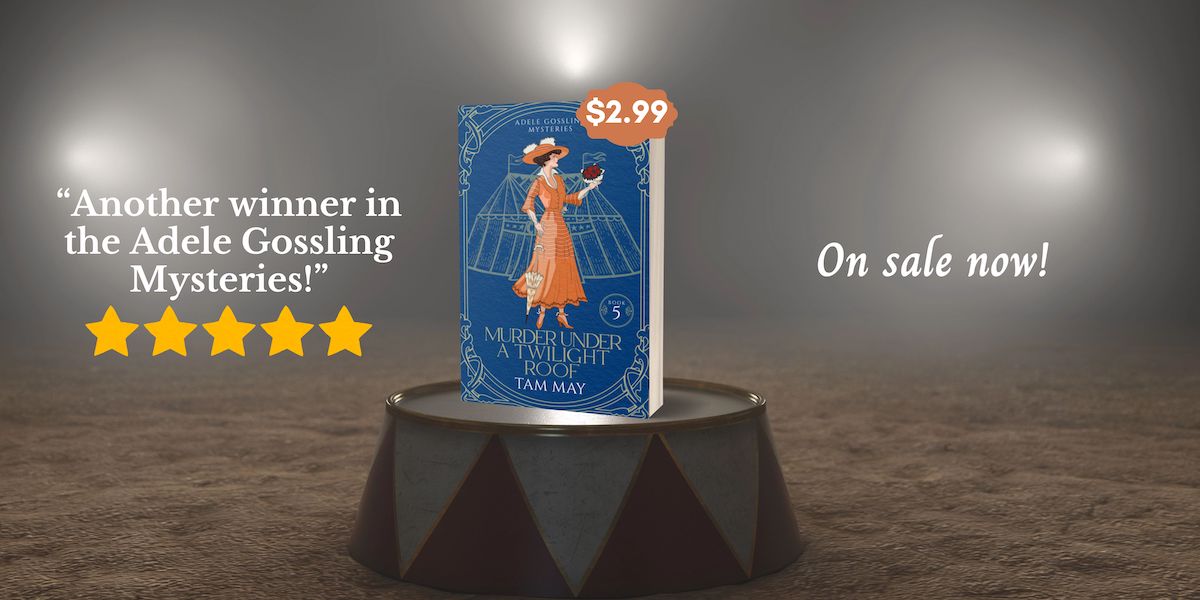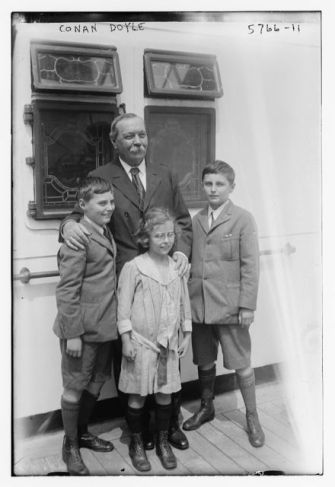
Title: The Case of the Dead Domestic
Series: Adele Gossling Mysteries: Book 6
Author: Tam May
Genres: Historical Cozy Mystery
Release Date: August 26, 2023
Everybody in town agrees: Arabella Parnell thinks far too highly of herself. She worked her way up to lady’s maid for one of Arrojo’s finest families, personal friends of the mayor. She attends parties given by the lady of the house as if she were the guest of honor. She writes letters to the daughter of her wealthy former employer as if they were comrades. She flirts with some of the most prominent men in the county.
So the Arrojo police are hardly surprised when they find her dead among the shrubbery in a wealthy bachelor’s conservatory.
And yet, amateur sleuth and suffragist Adele Gossling can’t help but wonder: Who was Arabella Parnell really? Was she just a servant with arrogant manners and too much self-assurance? Or was she the victim of the pride and passions of powerful men, one of whom did her in? With a hair comb, a brooch, and a candlestick to go on, can Adele solve this case?
Early reviews:
“It’s so much more than I expected from a cozy mystery.”
“The characters are well-rounded, interesting, and unique.”
You can get your copy of the book at a special promotional price at the following online retailers.
Excerpt
Missy Grace, the editor of the Arrojo Courier, hurried into her shop, her cotton hair flying as usual around her face. She pushed back her bangs with the edge of her pencil. “Adele, what can you tell me about that body found in Virgil Riddle’s conservatory?”
Adele stared at her. “What the devil are you talking about?”
“Don’t use such vulgar language, Adele,” Beatrice chided.
“It’s no worse than your ‘bum it,’ dear,” Missy barked.
Beatrice’s nose went up. “I stopped using ‘bum it’ last year.”
“My congratulations.” Missy turned her back to her. “I’m talking about the sheriff and your brother rushing out of the police station an hour ago, looking very official.”
“They told you there was a body in Virgil Riddle’s conservatory?” Adele asked.
“Certainly not,” Missy said. “You know how hush-hush they are when they’re being official.”
“Then how do you know about it?”
“I caught Assistant Deputy Curd having his morning bun at the bakery and wheedled it out of him.”
“It doesn’t surprise me,” Adele said dryly.
“Naturally, the boy was too dense to tell me anything of value,” Missy continued. “He could only say Mr. Riddle had found a girl’s body lying among the shrubbery in his conservatory, and she was most certainly dead.”
“Golly!” Beatrice sighed. “Another murder.”
“I wouldn’t necessarily take Assistant Deputy Curd’s word for it,” Adele said. “He’s not the brightest of men.”
“That’s why I’m coming to you,” said her friend. “You remember our bargain, Adele?” She looked meaningfully at her.
“I tell you what I know if you tell me what you know.” Adele nodded. “Only I honestly know nothing, Missy. This is the first I’m hearing of it.”
“Well then,” her friend took her arm, “it’s our duty as star reporter and lady detective to find out, isn’t it?”
“I’m not a lady detective, you know,” Adele remarked, but she took off the apron she always wore when dealing with some of the dirtier aspects of her work.
“You’re leaving me to mind the shop?” Beatrice’s green eyes, which had become more almond-shaped as the years passed, widened. “Golly!”
“I see you’ve replaced your ‘bum it’ with another inelegant colloquialism,” Missy remarked.
“A woman may speak as she needs to be heard,” Beatrice said with meaning.
“You know how to handle the cash register, as I showed you?” Adele asked.
“No one will come in anyway,” said the young woman. “It’s too early.”
“Nevertheless, we must always be ready to serve anyone.” Adele put on her gloves. “We’ll fetch Nin first.”
“Has she appointed herself lady detective too?” Missy eyed her.
“You might consider her the unofficial medium for the police,” Adele said as they emerged from her shop. “She’s helped them a great deal in the past, Missy.”
“I don’t object if she doesn’t,” she said.
About the Author

Writing has been Tam May’s voice since the age of fourteen. She writes stories set in the past that feature sassy and sensitive women characters. Tam is the author of the Adele Gossling Mysteries which take place in the early 20th century and features suffragist and epistolary expert Adele Gossling whose talent for solving crimes doesn’t sit well with the town’s more conventional ideas about women’s place. She has also written historical fiction about women breaking loose from the social and psychological expectations of their era. Although Tam left her heart in San Francisco, she lives in the Midwest because it’s cheaper. When she’s not writing, she’s devouring everything classic (books, films, art, music) and concocting yummy plant-based dishes.
Social Media Links
Facebook: https://www.facebook.com/tammayauthor/
Instragram: https://www.instagram.com/tammayauthor/
Pinterest: https://www.pinterest.com/tammayauthor/
Amazon Author Page: https://www.amazon.com/Tam-May/e/B01N7BQZ9Y/
BookBub Author Page: https://www.bookbub.com/authors/tam-may
Goodreads Author Page: https://www.goodreads.com/author/show/16111197.Tam_May





